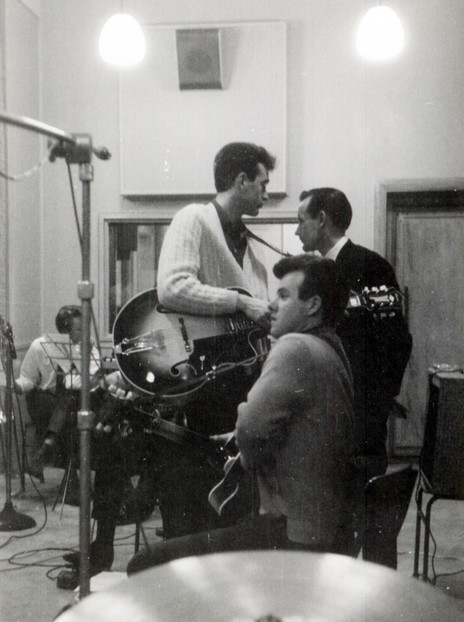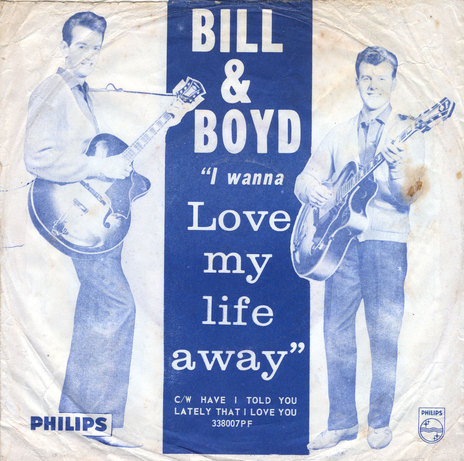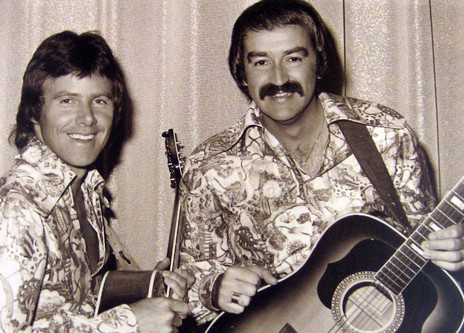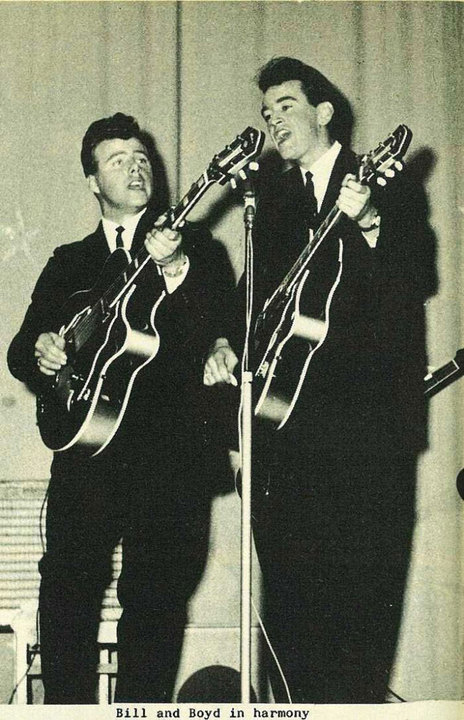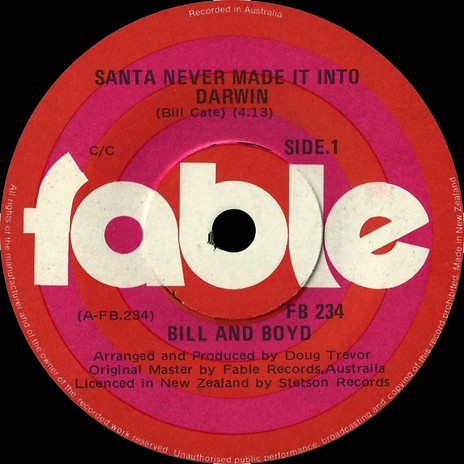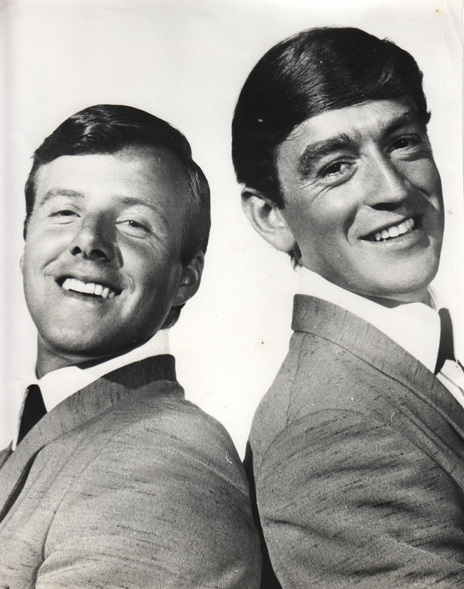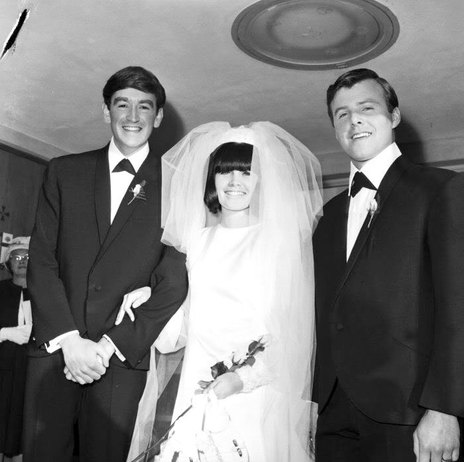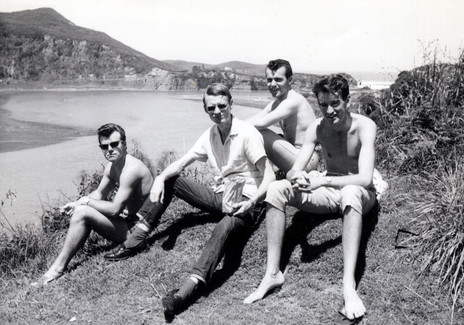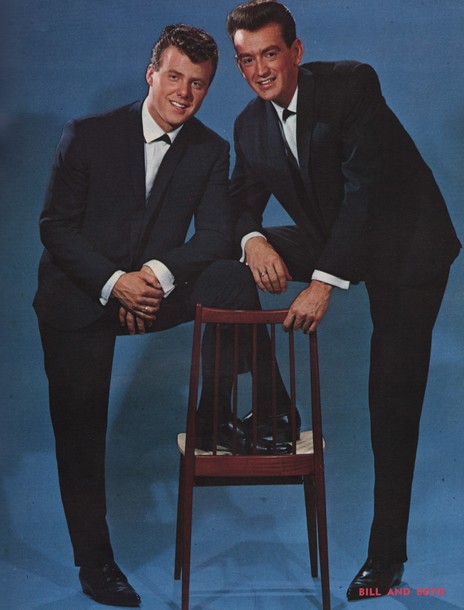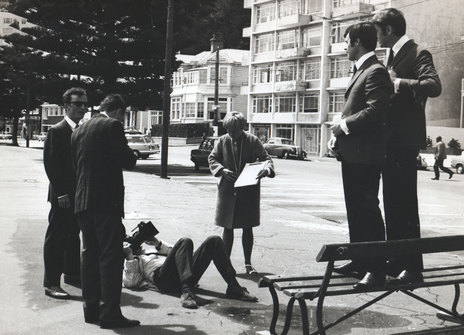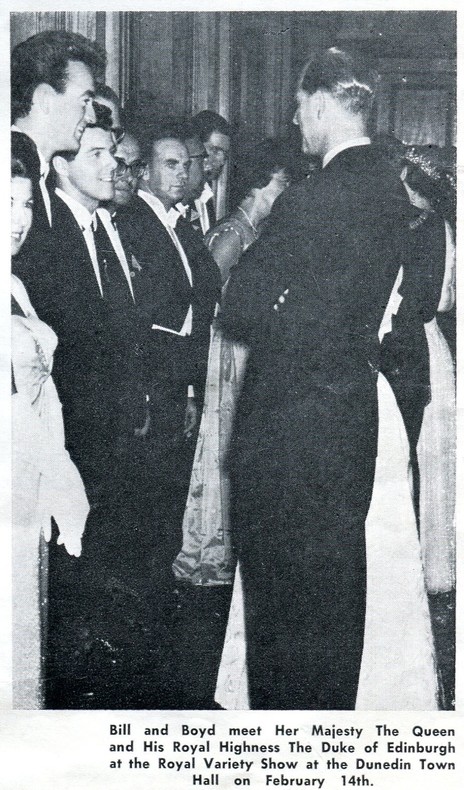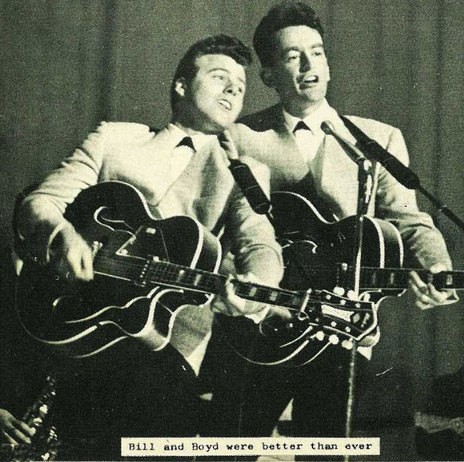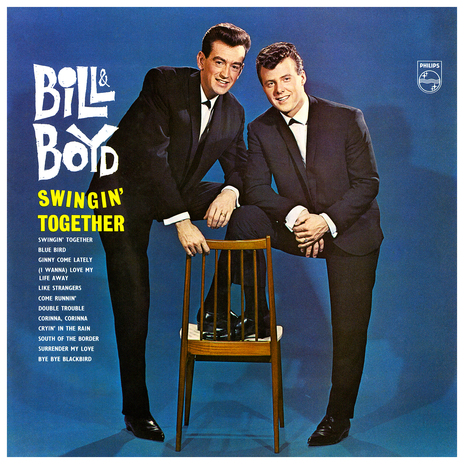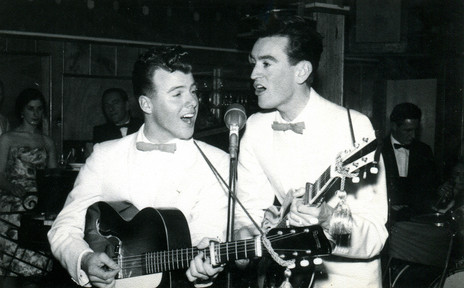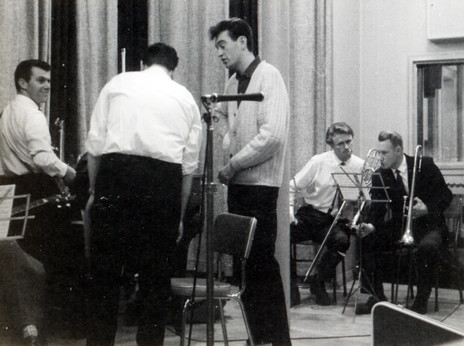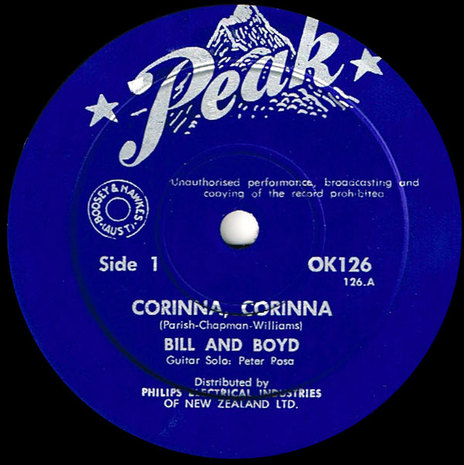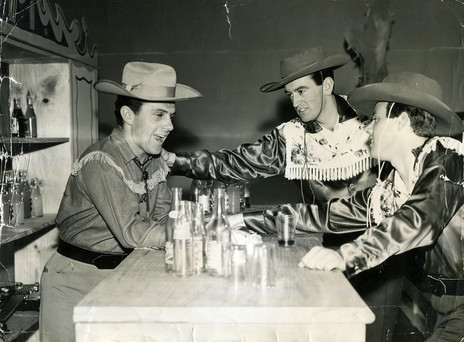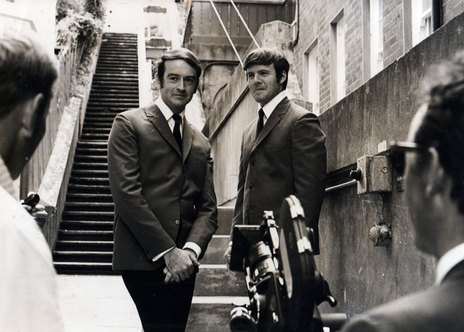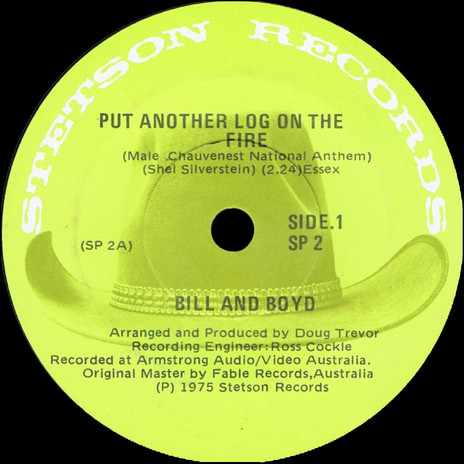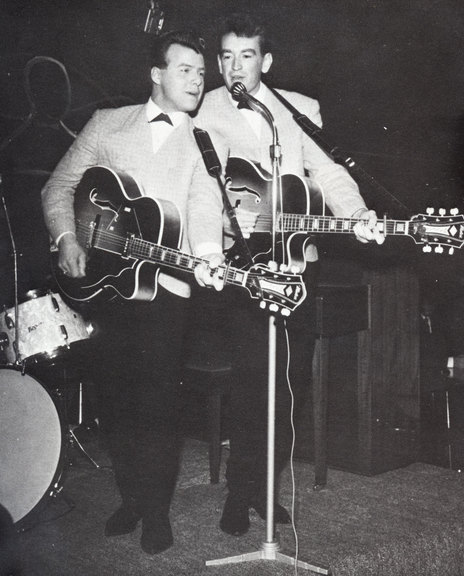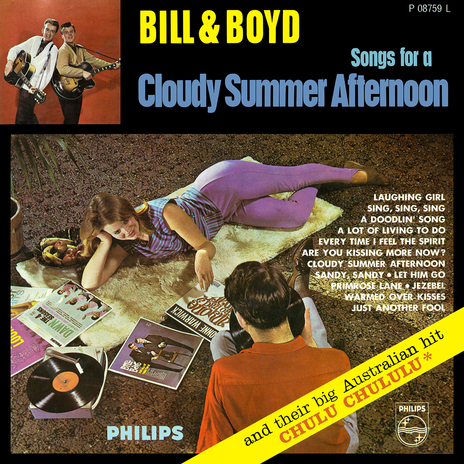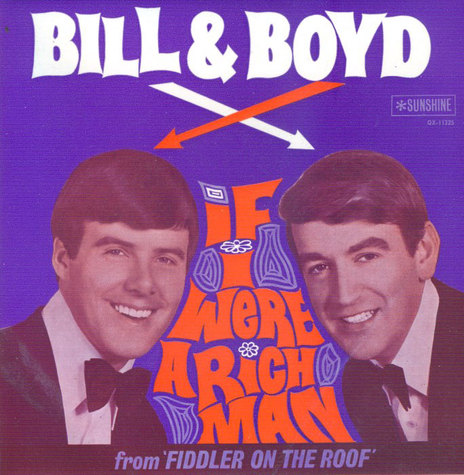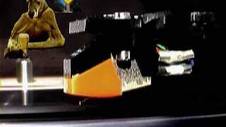From this environment came many musicians who made their name in the 1960s: The Fourmyula, The Simple Image, The Bitter End, vocalist Frankie Stevens.
Before these rock groups, an act emerged from this milieu to enjoy a long international career: Bill and Boyd, a teenage duo from Naenae who modelled themselves on the Everly Brothers.
Bill Boyd Robertson and Bill Cate met at Naenae College in 1957, when the district was experiencing a “ukulele wave”. They began singing together, obsessively practising their harmonies until the early hours of the morning. Using Robertson’s tape recorder, and a microphone clipped to the bedroom lampshade, they recorded themselves singing the hits of the day and their own originals (“dreadful” songs, Cate told music historian Roger Watkins). They listened to 2ZB’s weekly Lever Hit Parade to hear the latest songs, and whenever Elvis Presley had a new film out, they would hotfoot it to the King George theatre and watch his every move.
Soon, as Bill and Boyd, they were performing at local halls, and were invited to do a weekly 20-minute floor show at the Lower Hutt Town Hall’s Saturday night dance. “We used to prepare as if it was the Carnegie Hall,” recalled Cate. In 1959 they supported Johnny Devlin at the Wellington Town Hall. Shortly afterwards the Everly Brothers toured New Zealand, and Cate booked front row tickets for both the Auckland and Wellington concerts.
In their lunch hour they would meet on the steps of Parliament and discuss future gigs.
Hard workers, Bill and Boyd burnt both ends of the candle with day jobs and night-time gigs or rehearsals. Cate was an office junior at BP by day, and attended night classes in commerce at Victoria University; Robertson was at the Ministry of Works. In their lunch hour they would meet on the steps of Parliament, eat their sandwiches and discuss their repertoire and future gigs. They were desperate to record and hear themselves on the radio.
They didn’t have to wait long. In 1960 Bill and Boyd topped the Lever Hit Parade with their second 45rpm single, two covers of the Everly Brothers: 'Cathy’s Clown’ b/w ‘Let It Be Me’. (Warner Brothers had no distribution in New Zealand at the time, so the originals weren’t released.)
The following year, the duo shifted to Auckland and turned professional. Gigs were plentiful and better paid – sometimes six guineas a night at venues such as St Seps, the Montmartre and the Top Hat. As a duo they had fewer overheads, though they often recruited backing players such as Bob Paris and Bruce King (Paris had backed the Everlys themselves on their Australian tour), and occasionally performed with Jock Nisbet’s Big Band at the Peter Pan Cabaret.
Bill & Boyd recorded first for the Peak label – their 1960 debut ‘Fall in Love With You’ was produced by renowned big band leader and arranger Don Richardson – and from 1961 were on Philips. The latter sessions took place in Wellington, and some were produced by Peter Posa. After late nights in the studio, Posa would sleep on the couch of Cate’s mother, wake up for breakfast and thank her by setting up his gear in the lounge and playing through his repertoire.
Early recordings were often cover versions of songs that were hits overseas but not released in New Zealand; many were on the Everly Brothers’ label, Warners, which didn’t have distribution in New Zealand. Bill & Boyd would record songs from Australian station 2UE and transcribe them through the static.
Competition for cover versions among New Zealand artists was intense, said Robertson, describing the process to Gordon Campbell in 1978: “We’d try and get the jump by running through the American Hot 100 chart and picking out the fast movers to record before we even heard them. One time we had this fast mover all set up to do, we’d got the studio ready, and then the disc arrived – it was the Ventures’ ‘Walk Don’t Run’, an insturmental. How were we to know? They were really crazy days.”
They earned a place on Harry M. Miller’s Showtime Spectacular tours, variety shows that featured the Howard Morrison Quartet at the top of the bill, supported by acts such as Toni Williams and magician Jon Zealando. The massive success of these nationwide tours underwrote many of Miller’s other ventures, and they gave Bill & Boyd experience that led to many gigs supporting overseas visitors. Morrison suggested they try their luck on the Australian club circuit, and from 1965 Bill & Boyd – and their wives – were permanently based across the Tasman.
Besides gigs in Sydney’s clubland, the duo often performed on TV shows such as Bandstand and Six O’Clock Rock. An early breakthrough came in 1964 with their single ‘Chulu Chululu’, recorded live the previous year at the Rotorua Soundshell. Cate described this singalong as their riposte to Beatlemania: “We figured you couldn’t get anything much different than a Fijian folk song with a Liverpool beat.” It reached #10 in Australia just as the Beatles were visiting that country, remained in the charts for six weeks and in Australian memories for longer – it was re-released there twice, in 1973 and 1975.
In 1966, Bill & Boyd made their first tour of Australia as support act to the Seekers, a show which also toured New Zealand. The following year, an Australian tour supporting Herb Alpert led to the duo going further afield.
A 1970 U.S. tour took in 20 states; audiences always enjoyed the Māori songs in their sets.
After the tour with Alpert, they went to the United States in 1968 to support him there, and stayed six months. They concentrated on gigs in Los Angeles and Las Vegas – playing the Hollywood Bowl to 17,000 people – supported The Supremes and did a show in Central Park, New York. In 1970 the pair returned to the US for a tour that took in 20 states; American audiences always enjoyed the Māori songs they included in their sets of pop, country, standards and rock and roll.
The early 1970s were spent in Britain, where they played a long residency at London’s Showboat club, performed on TV variety shows, and on bills with Norman Wisdom, Bob Hope, Shirley Bassey, and Harry Secombe.
Returning to Australia in 1974, a charity single to raise funds after the devastating Christmas cyclone in Darwin also lifted their profile. Written by Bill Cate, ‘Santa Never Made It Into Darwin’ was recorded a week after the cyclone, and was being played on radio just hours after the sessions finished. With a light-country production similar to the Eagles, the song reached #1 in Australia and sold over 75,000 copies, with $10,000 going to cyclone relief; the B-side was ‘Chulu Chululu’.
The duo’s bookings quickly filled for 1975, and in May they responded with the biggest song of their career, ‘Put Another Log On The Fire’. Sub-titled “The Male Chauvinist National Anthem”, and described as “cheerfully offensive” by Allmusic.com, the song was written by US comic songwriter Shel Silverstein for the country artist Tompall Glaser. Besides stoking up the fire, the song’s narrator tells his girlfriend to cook him some bacon, patch his jeans, wash his socks, change a car tyre, fetch his pipe and slippers, and boil up a pot of tea. “Then put another log on the fire babe/ And come and tell me why you’re leaving me.” (The middle section goes into overdrive: “Now don’t I let you wash the car on Sunday?/ And don’t I warn you when you’re getting fat?” he sings, before suggesting “you’re too feminine to fight”.)
‘PUT ANOTHER LOG ON THE FIRE’, WAS SUB-TITLED “THE MALE CHAUVINIST NATIONAL ANTHEM”.
In New Zealand, the song seemed unavoidable in 1975-76, not just through radio play, but also television advertising placed by Stewart Macpherson, the promoter whose record label Stetson released it in New Zealand. (On the Stetson 45, the sub-title is spelt “chauvenest”.)Almost inevitably, the novelty song was a huge hit in Australia and New Zealand. It made #6 across the Tasman, and #5 in New Zealand after a 20-week journey through the charts. If it was an answer song to Helen Reddy’s ‘I Am Woman’, then it’s no wonder she responded with ‘Ain’t No Way to Treat a Lady’.
After over 15 years playing together, Bill & Boyd were at the peak of their career, performing on a Dinah Shore TV special filmed at the Sydney Opera House, and touring with Glen Campbell. This connection led to Campbell producing an album for the duo in Los Angeles, using his own backing band. When Companions was released they were dividing their time between England and the US, but they still regarded themselves as New Zealanders. On the TV show Dinah they agreed to perform only if a National Film Unit clip on New Zealand was screened while they were singing. “That clip was so long,” Cate told Gordon Campbell, “that we must have gone through about 50 repeats of ‘Pōkarekare Ana’.”
In 1978 Bill & Boyd hosted their own variety series on TV1, featuring songs, skits, dancing, and overseas guests such as Kate Bush, Graham Bonnet, and the Hues Corporation alongside local acts, among them Sharon O'Neill and the Rodger Fox Big Band.
Bill & Boyd continued to perform together until 1989, more than 30 years after they first traded harmonies. In Australasia at the time, perhaps only the Bee Gees could claim a longer career – but they were brothers. As John Dix wrote a year earlier in Stranded in Paradise, “Schoolmates at Wellington’s Naenae College, Bill Cate and Boyd Robertson must really like each other.”
--
Bill Cate passed away on 29 November 2020, aged 80.
